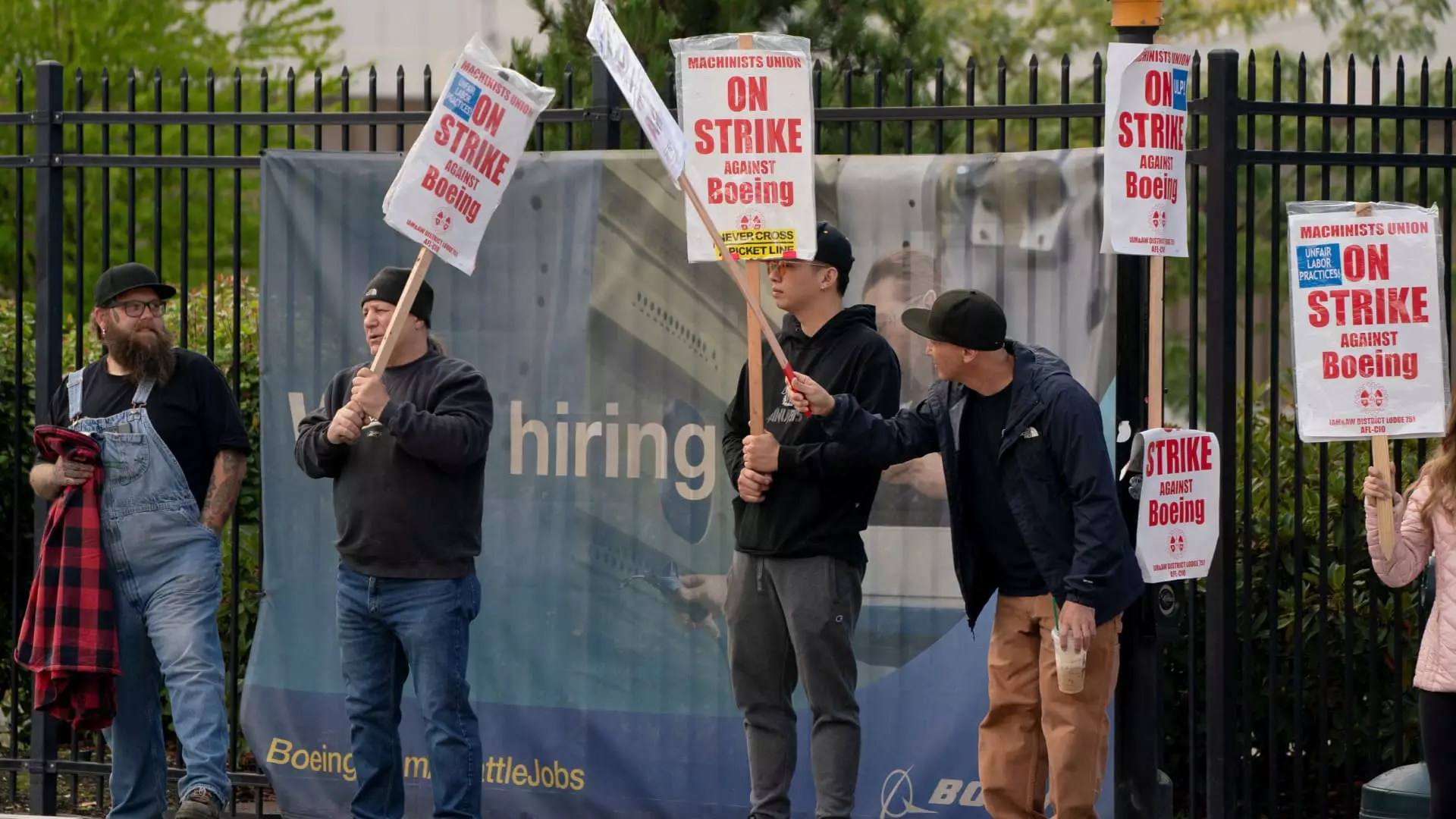In a decisive move to manage financial strain, Boeing has announced significant cost-cutting measures amidst a labor strike that has paralyzed its production capabilities. With over 30,000 factory workers in the Seattle area participating in a walkout after rejecting a tentative labor agreement, the aerospace giant faces an unprecedented challenge as it seeks to secure its fiscal health while addressing employee grievances.
Boeing’s Chief Financial Officer, Brian West, outlined several critical measures aimed at preserving cash flow. These include implementing a hiring freeze, curtailing nonessential travel for employees, and reducing spending with suppliers. This response underscores the urgency of the situation, signifying a clear intention to safeguard financial resources as the company grapples with the ramifications of halted production and the ongoing strike.
The company has indicated a halt on most purchase orders for key aircraft models, including the 737 Max, 767, and 777. Such strategic cuts not only reflect Boeing’s immediate financial woes but also foreshadow potential disruptions across its supply chain, emphasizing the interconnectedness of the aerospace industry.
The strike represents not just a labor dispute; it marks a pivotal moment for Boeing during a time when the company is already attempting to rebound from significant operational setbacks. The rejection of the labor deal reflects deep discontent among workers, likely catalyzed by concerns over job security and working conditions. As Boeing navigates these choppy waters, the risk of prolonged labor disputes looms large. The potential for temporary furloughs of employees, managers, and executives, as hinted by West, raises concerns about employee morale and retention moving forward.
The financial fallout from the strike extends beyond immediate cash flow issues. As noted in recent assessments by credit rating agencies, there is a mounting threat of credit downgrades for Boeing. Moody’s and Fitch Ratings have both placed Boeing under review, suggesting that continued labor unrest could elevate borrowing costs for a company already encumbered by significant debt—approximately $8 billion in losses reported in the first half of the year alone.
The repercussions of a credit downgrade could be severe, limiting Boeing’s financial flexibility and increasing costs for future capital endeavors, thereby complicating recovery efforts.
Boeing’s current predicament highlights the delicate balance between maintaining operational integrity and addressing the needs of its workforce. As the strike continues, the company is under pressure not only to reach a satisfactory labor agreement but also to ensure its long-term viability through effective fiscal management. The proactive measures taken today may help preserve Boeing’s future; however, the resolution of labor disputes and the restoration of trust among workers will be pivotal in navigating the turbulent waters ahead. In the aerospace industry, where collaboration and stability are paramount, Boeing’s ability to foster a supportive work environment could ultimately dictate its success in overcoming these challenges.

